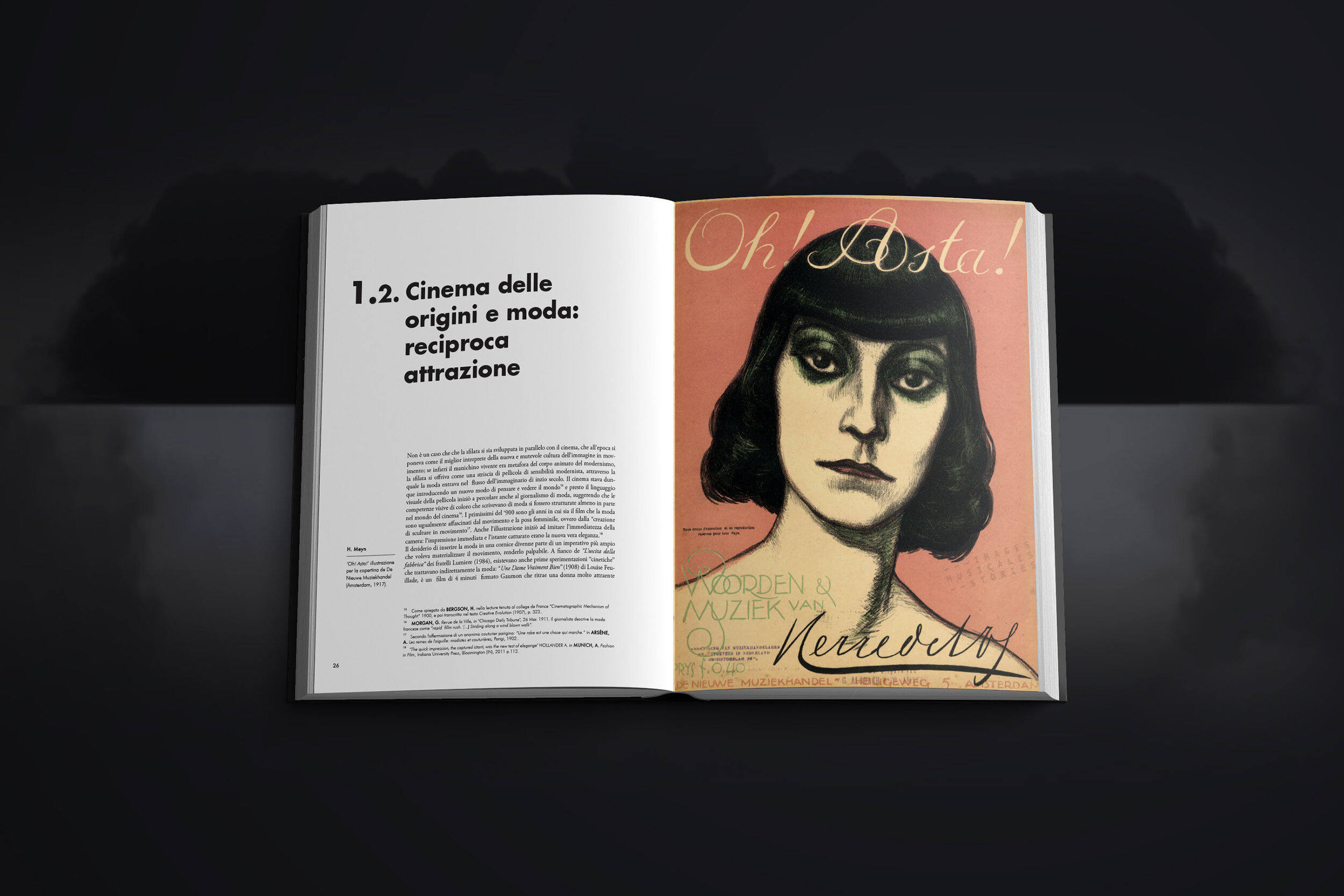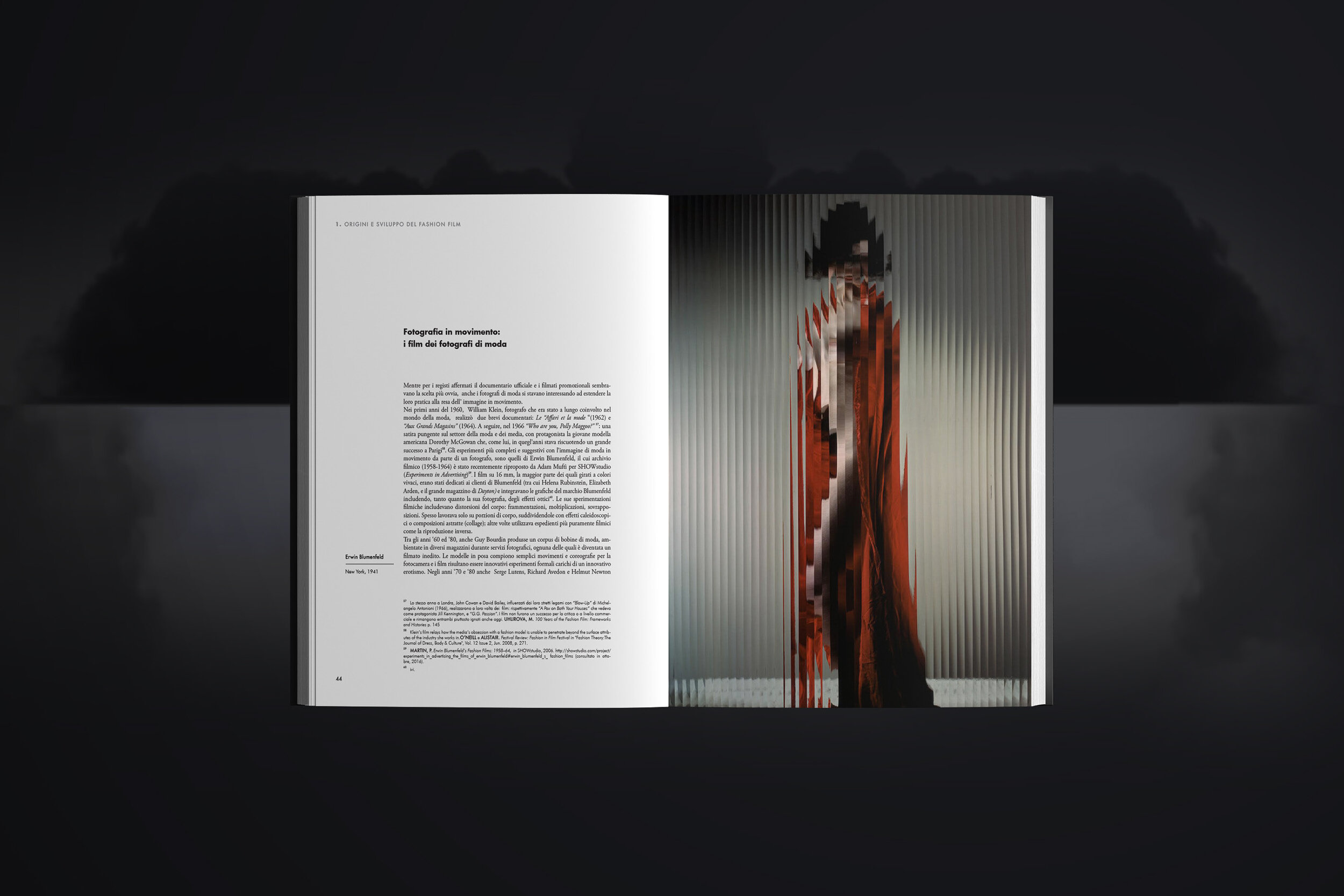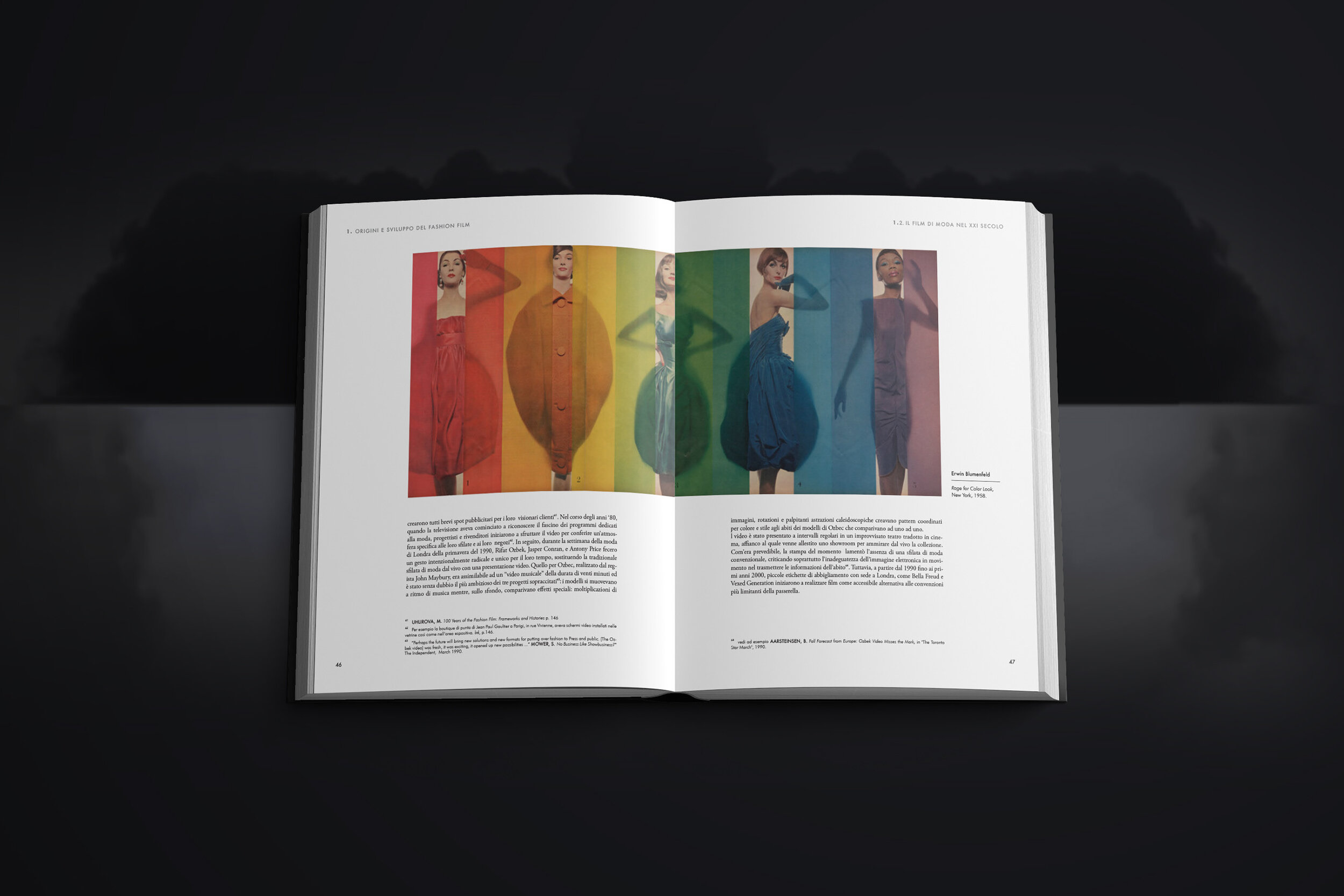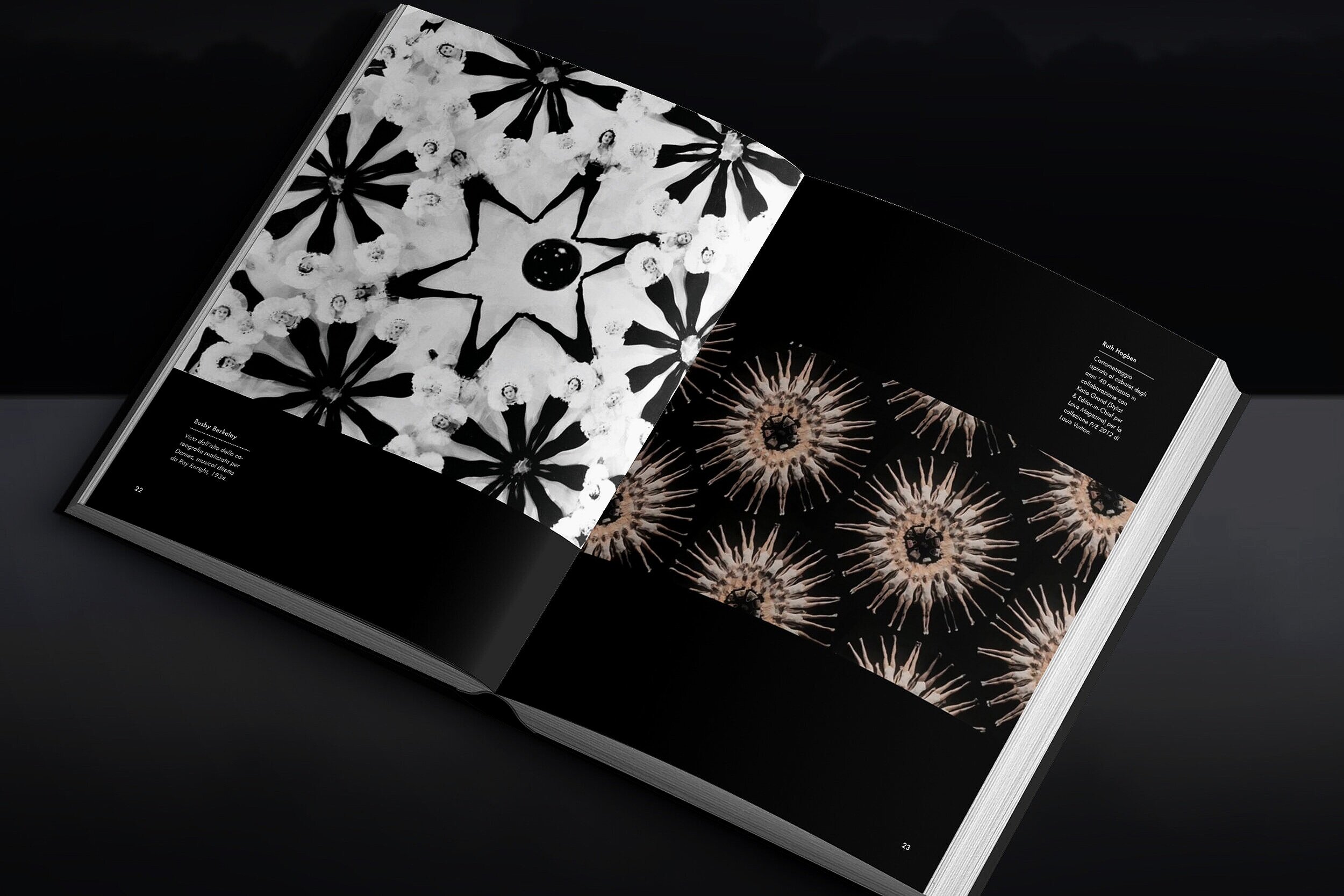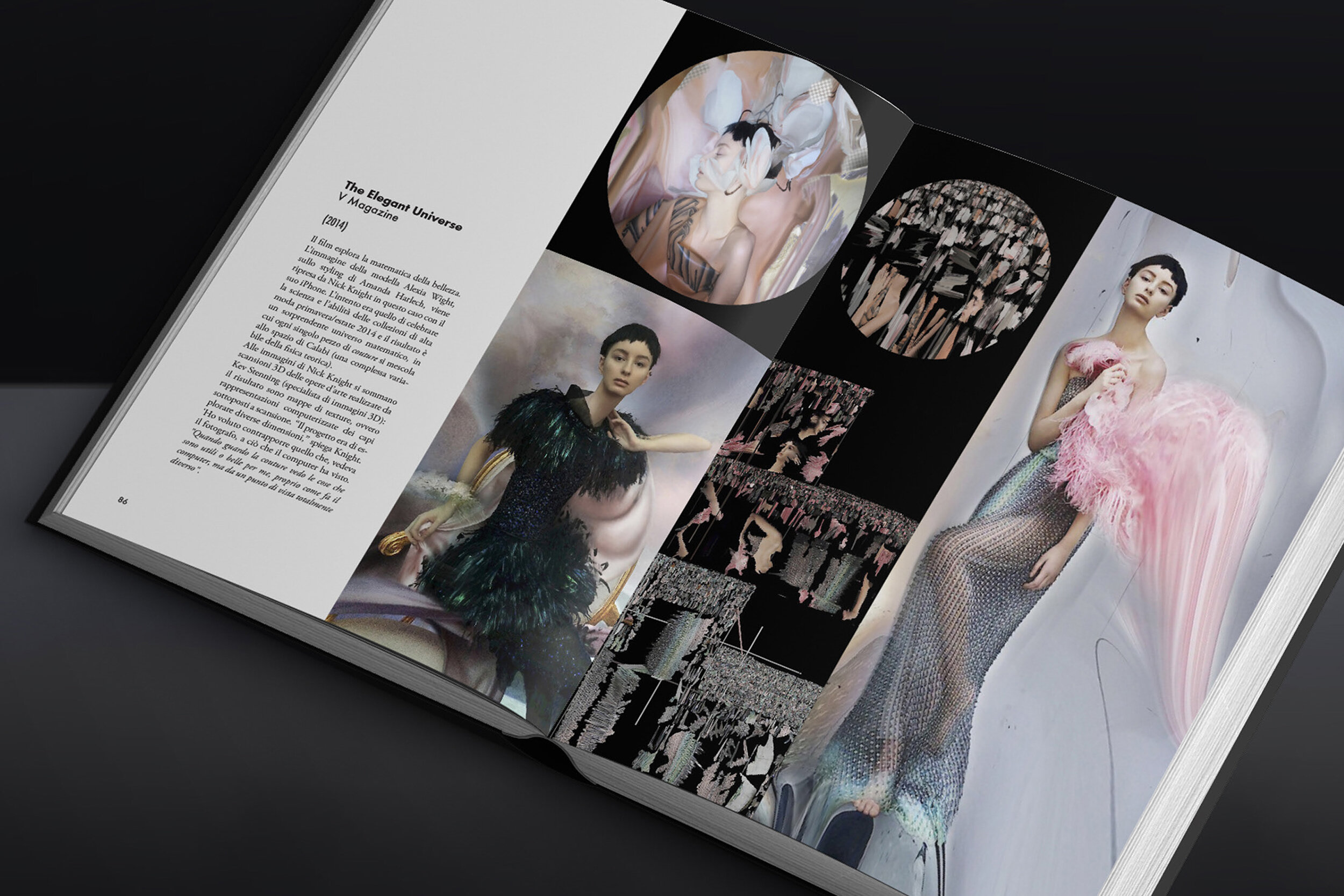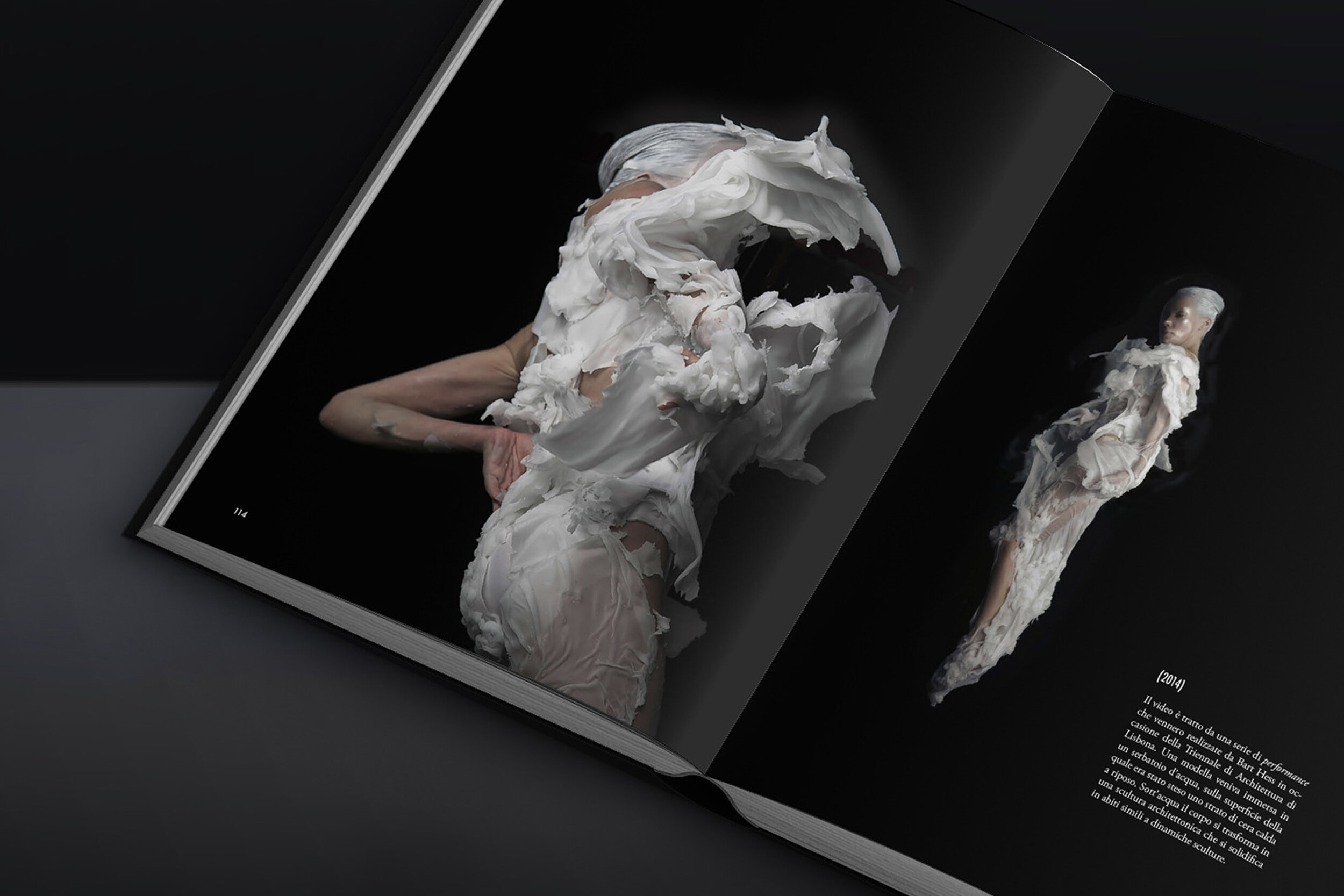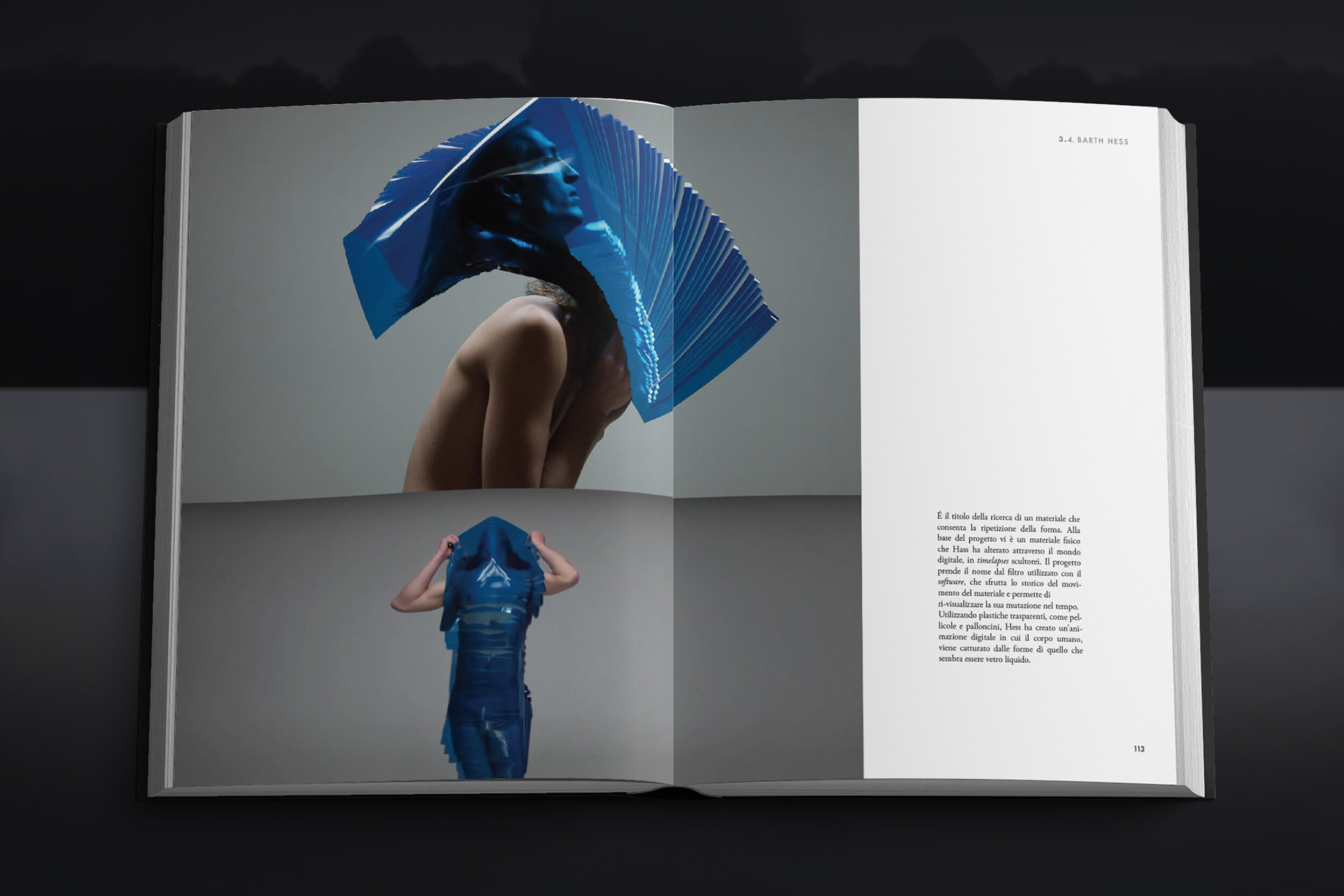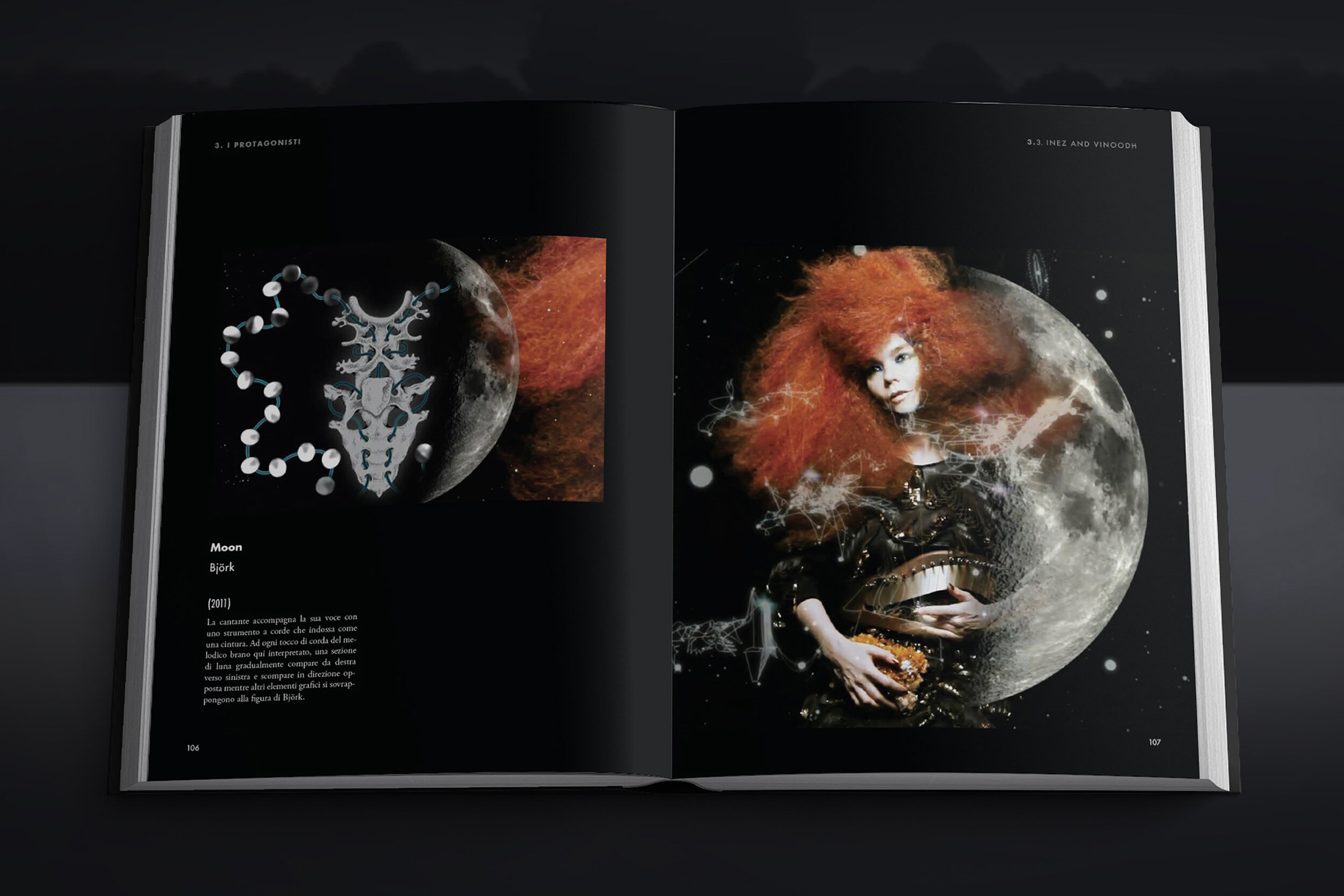Antinoo - the book
ANTINOO is my Master’s thesis at IUAV Venice — a four-chapter deep dive into the world of Fashion Film. While English literature had plenty to say on the topic, the Italian scene was missing in action — so I filled the gap. The final chapter brings theory to life with ANTINOO, my own fashion film showcasing two stunning capsule collections by designer Filippo Soffiati.
Date
2015
Final project
A step back in history
Many of today’s fashion film practices and director motivations can be traced back to pre-digital cinema, which—over a century ago—was the first to experiment with performance and costume in motion.




The Roots of Fashion Film
Long before fashion film had a name, movement was already transforming the runway. From static mannequins to dynamic models, early fashion shows embraced rhythm and metamorphosis—just like today’s films. Fashion film borrows from early cinema too: reverse play, stop-motion, and dreamy overlays nod to Méliès and the hypnotic Serpentine Dance of Loie Fuller. It’s all about turning garments into visual magic.
Fashion Film in the digital era
When anyone can shoot a film on their phone and share it with the world, it’s no surprise fashion embraced the medium. Designers are now blending ads, music videos, and visual art—pushing fashion beyond the runway or magazine page. From surreal collages to animated dreamlike figures and underwater fantasies, fashion films have become a space to explore the weird, the poetic, and the unexpected.
Non-narrative Fashion Film
In non-narrative fashion films, movement, sound, and visual effects take center stage—transforming the dress into an elastic, ever-shifting form that stretches across space and time. This fluidity makes fashion the perfect canvas to explore the cinematic potential of transformation and visual experimentation.






